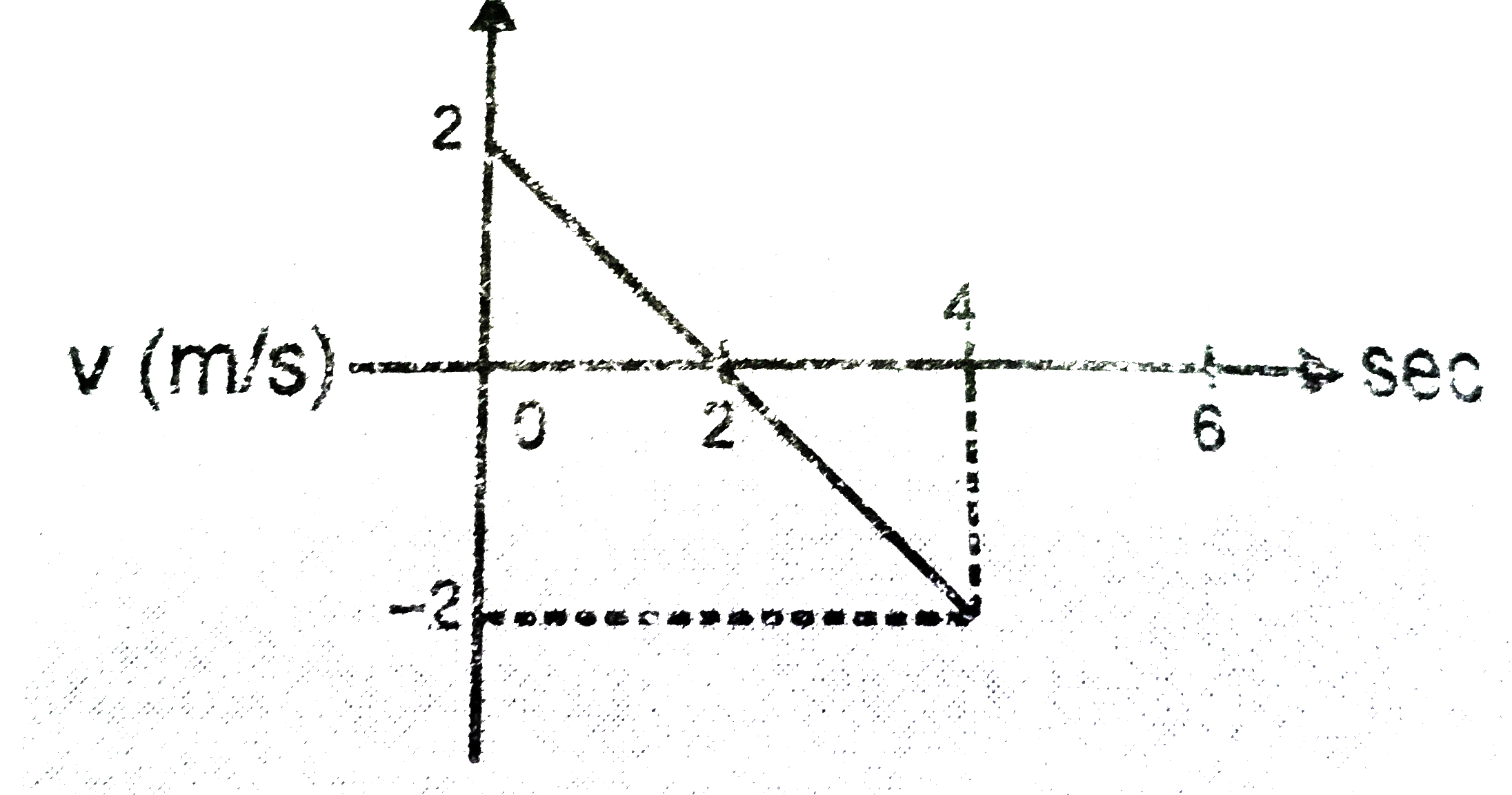If the displacement of a particle is zero, then distance covered by it
must be zero
may or may not be zero
cannot be zero
depends upon the particle
The correct Answer is:B
To solve the question, "If the displacement of a particle is zero, then distance covered by it," we need to analyze the concepts of displacement and distance in physics.
1. Understand the Definitions:
- Displacement: It is the shortest distance from the initial position to the final position of the particle, along with the direction. It can be positive, negative, or zero.
- Distance: It is the total path length traveled by the particle, regardless of direction. It is always a non-negative quantity.
2. Consider an Example:
- Imagine a particle moving in a circular path. Let’s say the particle starts at point A, travels around the circle, and returns to point A.
3. Calculate Displacement:
- In this example, the initial position and the final position of the particle are the same (both are point A).
- Therefore, the displacement is calculated as:
Displacement=Final Position−Initial Position=A−A=0
4. Calculate Distance:
- While the displacement is zero, we need to calculate the distance traveled by the particle.
- The distance traveled is the length of the path taken by the particle, which in the case of a circular path is the circumference of the circle:
Distance=Circumference=2πr
- Here, r is the radius of the circular path.
5. Conclusion:
- In this scenario, we see that the displacement is zero, but the distance covered by the particle is not zero (it is 2πr).
- Therefore, we conclude that if the displacement of a particle is zero, the distance covered by it may or may not be zero. It can be non-zero depending on the path taken.
Final Answer:
The distance covered by the particle can be non-zero even if the displacement is zero.
- Displacement: It is the shortest distance from the initial position to the final position of the particle, along with the direction. It can be positive, negative, or zero.
- Distance: It is the total path length traveled by the particle, regardless of direction. It is always a non-negative quantity.
- Imagine a particle moving in a circular path. Let’s say the particle starts at point A, travels around the circle, and returns to point A.
- In this example, the initial position and the final position of the particle are the same (both are point A).
- Therefore, the displacement is calculated as:
Displacement=Final Position−Initial Position=A−A=0
- While the displacement is zero, we need to calculate the distance traveled by the particle.
- The distance traveled is the length of the path taken by the particle, which in the case of a circular path is the circumference of the circle:
Distance=Circumference=2πr
- Here, r is the radius of the circular path.
- In this scenario, we see that the displacement is zero, but the distance covered by the particle is not zero (it is 2πr).
- Therefore, we conclude that if the displacement of a particle is zero, the distance covered by it may or may not be zero. It can be non-zero depending on the path taken.
The distance covered by the particle can be non-zero even if the displacement is zero.
Topper's Solved these Questions
- Motion in Straight Line BOOK - VMC MODULES ENGLISHCHAPTER - Motion in Straight Line EXERCISE - IN-CHAPTER EXERCISE-B
10 Videos
- Motion in Straight Line BOOK - VMC MODULES ENGLISHCHAPTER - Motion in Straight Line EXERCISE - IN-CHAPTER EXERCISE-C
10 Videos
- Motion in Straight Line BOOK - VMC MODULES ENGLISHCHAPTER - Motion in Straight Line EXERCISE - PRACTICE EXERCISE
80 Videos
- MOTION IN A STRAIGHT LINE & PLANE BOOK - VMC MODULES ENGLISHCHAPTER - MOTION IN A STRAIGHT LINE & PLANE EXERCISE - IMPECCABLE
52 Videos
- Motion in Two DimensionsBOOK - VMC MODULES ENGLISHCHAPTER - Motion in Two DimensionsEXERCISE - MCQ
2 Videos
Similar Questions
If the displacement of a body is zero is the distance covered by it necessarily zero ? Explain with suitable illustration.
View SolutionIf the displacement of a body is zero is the distance covered by it necessarily zero ? Explain with suitable illustration.
View SolutionExplain with the help of an example, if the displacement of a particle is zero, then it is not necessary that the distance traversed by it is also zero.
View SolutionFigure a represents the speed-time graph for a particle .Find the distance covered by the particle betweent=10 min and t= 30 min .

View SolutionA particle moves along the x-axis obeying the equation x=t(t−1)(t−2), where x is in meter and t is in second
a. Find the initial velocity of the particle.
b. Find the initial acceleration of the particle.
c. Find the time when the displacement of the particle is zero.
d. Find the displacement when the velocity of the particle is zero.
e. Find the acceleration of the particle when its velocity is zero.
View SolutionVelocity time graph for a particle moving in a line is given.
Calculate the displacement of the particle and distance travelled in first 4 seconds.

View SolutionConsider the motion of the tip of the minute hand of a clock. In one hour
(a) the displacement is zero
(b) the distance covered is zero
(c) the average speed is zero
(d) the average velocity is zero
View SolutionAssertion: Displacement of a body may be zero when distance travelled by it is not zero.
Reason: The displacement is the longest distance between initial and final position.
View SolutionThe relation 3t=√3x+6 describe the displacement of a particle in one direction where x is in metres and t in sec.
The displacement, when velocity is zero is
View SolutionStatement I: The displacement of a body may be zero, though its distance can be finite.
Statement II: If the bodt moves such that finally it arrives at the initial point, then displacement is zero while distance is finite.
View Solution
